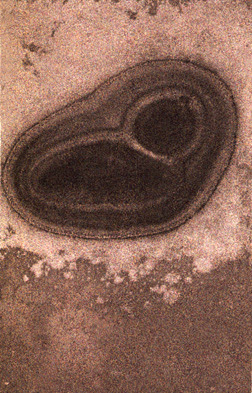 |
| Brooks, untitled, 2012, 30 x 30" |
 |
| Kandinsky, A Few Circles, 1926 |
This is where Arnold Brooks, printmaker, sound artist, filmmaker, enters the scene. When Arnold, quite by accident, first opened up a sound file in photoshop, the computer imaging editor, he was dumbstruck: here was an image that resembled a seascape or a desert, or the lovely meandering grain that you see in wood - but it was a representation of sound. What relation was there? Were certain shapes selected by the computer code? What forces were at work to render these forms? He pursued his investigations, terming the images of sound files 'transpositions'. He found he could reverse the process; he could edit the sound to make other transpositions, or edit the transposition to make other sounds. His original feelings of deep wonder never ceased. As he says, "The static image and the time-based piece are literally the same file; in their native environment the files are one. The transposed file can be manifested simultaneously in two different states while in the computer and is still the exact same file." And what should we call this manifestation? Well, if we listen to it it's sound and if we look at it it's a picture - nothing's changed there. But incredibly, the two are made distinct by a process external to the event: a few mere symbols, more or less, in the computer code, or by running the same code through different codecs or software or ASCII editors.
Arnold is not happy with his transpositions. He finds them "moribund" because their soul - sound - has been torn out of them. They are lifeless, he says, they don't ring. It was with great reluctance then that he showed several at Manhattan Graphics recently as sort of a research in progress, including the image above. He wasn't ready for the overwhelming enthusiastic reaction he got from fellow artists, which must have surprised and caught him off guard: his transpositions were being compared to some of the outstanding works in the minimalist canon. Still, if you ask him what really matters he'll say that's pretty hard, because that's asking how shapes are made.
Arnold Brooks' email is isthmus.pictures.sounds@gmail.com













